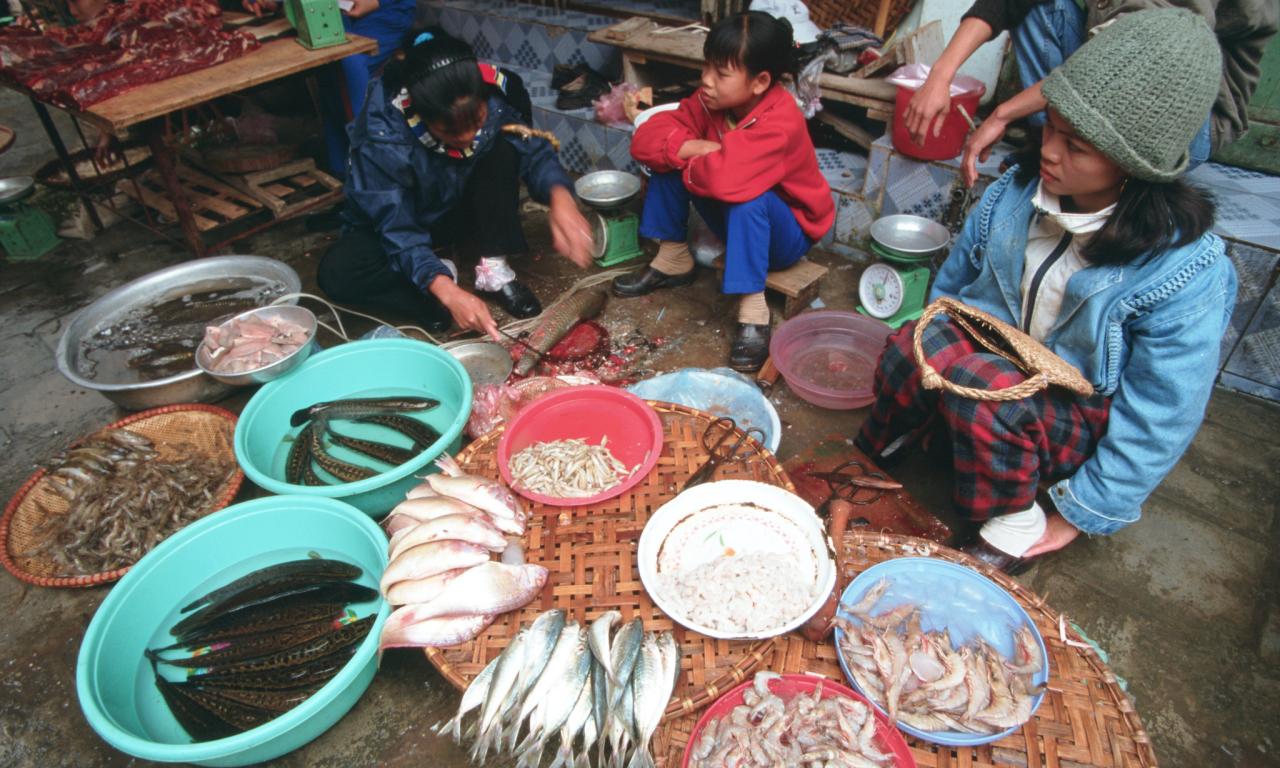
-
Despite playing an outsized role in food and nutrition security, aquatic foods are persistently overlooked in global policies, investments and research
-
A new Blue Food Assessment paper carefully examines the role of aquatic foods in food systems to fill in knowledge gaps and advocate for increased recognition
Though capture fisheries constitute the largest wild-food resource, providing a critical nutrient-rich food source to people in low- and middle-income countries, their role is often overlooked in global food security initiatives. Aquatic foods are further left out of food system research, investments and policies, yet they are essential in transforming food systems towards more equitable and sustainable outcomes—particularly in improving food access to the two billion people undernourished globally.
To bring aquatic foods center focus in sustainable development, and through this recognition usher in a critical justification to preserve the integrity and diversity of aquatic ecosystems, a new paper reviews the current contributions and future potential of aquatic food systems: The vital roles of blue foods in the global food system.
The paper is the latest installment in The Blue Food Assessment (BFA), an international joint initiative featuring over 100 scientists from more than 25 institutions. Led by the Stockholm Resilience Center, Stanford University’s Center for Ocean Solutions and EAT, with research contributions from WorldFish's scientists and partners, the interdisciplinary team is supporting policymakers and development experts to harness the potential of aquatic foods to nourish both people and planet.
To better understand the role of aquatic foods in food systems, the BFA team is publishing a series of interdisciplinary papers that review various socioeconomic and environmental aspects of aquatic food systems: their sustainability, contributions to food and nutrition security, livelihood diversification and promotion of gender equality, amongst others.
Thus far, the BFA has determined that demand for aquatic foods is set to double by 2050 and aquatic foods have a much lower carbon footprint than terrestrial animal-sourced foods on average, which can be further reduced with stronger enforcement of illegal and underreported fishing. Furthermore, recognizing the critical role of aquatic foods in supporting life and livelihoods around the world creates a greater argument for aquatic ecosystem conservation and sustainable resource extraction.
Why aquatic foods?
Aquatic foods are diverse and packed full of micronutrients and essential fatty acids, which also increase the bioavailability of other nutrients on the plate—meaning, they support the uptake and absorption of nutrients from other foods. Furthermore, they provide over 3.3 billion people with 20 percent or more of their animal protein intake.
The diversity of aquatic foods, both nutritionally and ecologically, also means they can be harvested in various contexts and geographies to improve local and regional food security and build resistance in times of shocks. Though large commercial fish species tend to receive the majority of attention, diverse aquatic foods harvested from coastal and inland waters are crucial to building climate resilience into food systems, whether they are crustaceans, seaweeds, oysters, cockles or small indigenous fish species.
“Diversity is key to underpinning resilience in food systems; by having a variety of sources and systems, some will be able to adapt to climatic changes more than others and be less vulnerable to a single stressor or event. Furthermore, aquatic foods like seaweed are also an effective mitigation tool, as they absorb and store atmospheric CO2,” said Eddie Allison, the paper’s co-author and WorldFish’s interim director of science and research.
The variety of aquatic food systems also creates a range of jobs along supply chains in both primary activities and secondary postharvest activities like fish processing, transport or retail. In the case of aquaculture, there’s also a host of external activities, such as developing fish feeds or breeding parent stock to create genetically improved fish seed.
Around the world, approximately 800 million people depend on small-scale fisheries and aquaculture for their livelihoods, particularly in underdeveloped regions.
Increasing global recognition
The paper’s authors aimed to better incorporate aquatic foods into food system decision-making and analyses, while safeguarding the potential of aquatic foods to tackle malnutrition and lift millions out of poverty.
Furthermore, BFA researchers are focused on championing and supporting small-scale actors, who are similarly overlooked in global policies and analyses. Their work tends to be informal and often goes unrecorded in official fisheries statistics, rendering their contributions invisible and left out of policy discussions.
But to rectify persistent inequalities in global food systems, both low-income fish workers and consumers must be prioritized in policies and investments. Aquatic foods are often the most readily available animal-source food in underdeveloped regions, while also being a primary livelihood activity, so they need to be better recognized, acknowledged and invested in to support those who depend on them.
Aquatic foods can also be made more sustainable to ensure people around the world have access to them now and in the future, via improved regulations, stronger policy enforcement and targeted investments in supply chains.
“We hope that improved recognition of the contributions of aquatic foods to food and nutrition security and livelihoods will ultimately lead to better aquatic ecosystem preservation,” said Allison.
